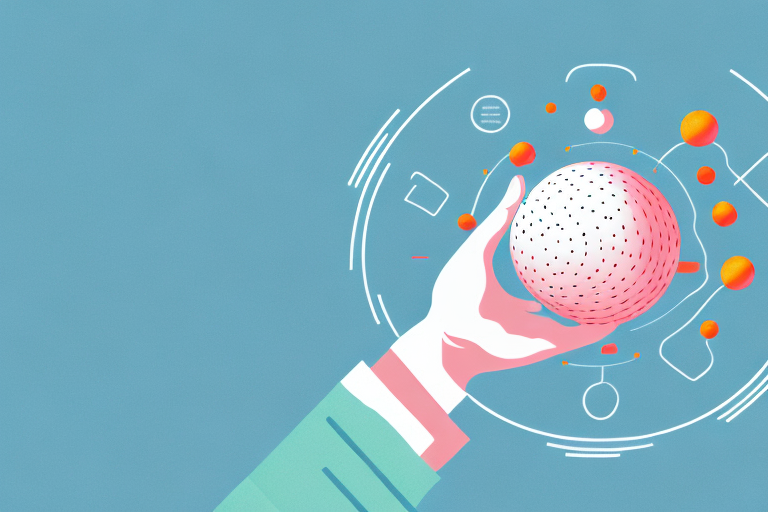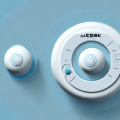If you’re looking to improve your physical health and overall well-being, incorporating trigger point ball exercises into your fitness and self-care routine is a fantastic place to start. In this comprehensive guide, we’ll explore what trigger points are and how they affect your body, the benefits of using trigger point balls, and how to safely and effectively perform these exercises. We’ll also delve into how to target specific muscle groups, combine trigger point balls with stretching, integrate them into your recovery routine, make them a regular part of your self-care, and explore additional techniques for releasing tension and tightness in the body.
What are Trigger Points and How Do They Affect Your Health?
Trigger points are nodules, or knots, within your muscles that can cause pain, discomfort, and tension in your body. They can lead to restricted range of motion, headaches, difficulty sleeping, and even affect your mood. Trigger points are often caused by overuse or injury, but can also be caused by stress and poor posture. By using trigger point balls to release these knots, you can alleviate these symptoms and improve your overall health.
In addition to using trigger point balls, there are other methods to help prevent and manage trigger points. Regular stretching and exercise can help keep your muscles healthy and prevent the development of trigger points. Maintaining good posture and taking breaks from sitting or standing for long periods of time can also help prevent trigger points from forming. Additionally, getting regular massages or seeing a physical therapist can help identify and treat trigger points before they become a bigger issue.
The Benefits of Incorporating Trigger Point Ball Exercises into Your Fitness Routine
Using trigger point balls has many benefits, including increased circulation, improved flexibility and range of motion, relief from muscular pain and tension, and stress relief. They can also improve posture and aid in injury prevention. Using trigger point balls regularly can lead to a higher quality of life and overall greater physical health.
In addition to the physical benefits, incorporating trigger point ball exercises into your fitness routine can also have mental health benefits. The focused, repetitive movements can help to calm the mind and reduce stress and anxiety. Additionally, the sense of accomplishment from mastering new exercises and seeing improvements in flexibility and strength can boost self-confidence and improve overall mood.
Finding the Right Trigger Point Ball for You: A Guide to Different Types and Materials
When it comes to trigger point balls, there are many options to choose from. It’s essential to find the right one for you. Different materials, sizes, and textures will affect how effectively the ball rolls over your muscles. A harder ball will have a more intense effect, while a softer ball will be more gentle. Be sure to try out a few different types to find what works best for you.
Some popular materials for trigger point balls include rubber, foam, and silicone. Rubber balls are typically the hardest and provide the most intense pressure, while foam balls are softer and more gentle. Silicone balls are a good middle ground, providing moderate pressure with a slightly softer texture. Consider your pain tolerance and the areas you plan to target when choosing a material.
How to Perform Trigger Point Ball Exercises Safely and Effectively
Before beginning any exercise regimen, it’s important to understand how to do so safely and effectively. When using trigger point balls, make sure to start slowly and apply gentle pressure. Always listen to your body and stop if you experience any pain or discomfort. Rolling over your muscles is also more effective than simply applying pressure to a single area. The key is to roll over the trigger point, and not stay in one spot for too long.
It’s also important to note that trigger point ball exercises should not be used as a substitute for medical treatment. If you have any underlying medical conditions or injuries, it’s best to consult with a healthcare professional before starting any new exercise routine. Additionally, it’s recommended to use a trigger point ball that is appropriate for your level of experience and fitness. Beginners should start with a softer ball and gradually work their way up to a firmer ball as their muscles become more accustomed to the pressure. Remember to always prioritize safety and listen to your body during any exercise routine.
Targeting Specific Muscle Groups with Trigger Point Ball Exercises
There are many different muscle groups you can target with trigger point balls. Some of the most common areas of tension include the neck and shoulders, hips, and upper back. Using a trigger point ball on these areas can relieve tension and alleviate pain. It’s also essential to work on your core, glutes, and legs for balance and stability.
Additionally, trigger point ball exercises can also be used to target specific muscles in the arms and legs. For example, using a trigger point ball on the calf muscles can help alleviate tightness and soreness after a long run or workout. Similarly, using a trigger point ball on the forearms can help relieve tension and pain from repetitive motions such as typing or playing an instrument. By targeting specific muscle groups with trigger point ball exercises, you can improve your overall flexibility, range of motion, and reduce the risk of injury.
Combining Trigger Point Ball Exercises with Stretching for Maximum Results
While trigger point ball exercises are effective on their own, combining them with stretching can provide maximum results. Stretching after using trigger point balls can help stretch out the muscles further and improve flexibility. Always make sure to stretch out any muscle group you’ve worked on with the trigger point ball.
Integrating Trigger Point Ball Work into Your Recovery Routine to Prevent Injury and Improve Performance
Recovery is just as important as exercise when it comes to maintaining physical health. Adding trigger point ball work to your recovery routine can help prevent injury and improve your overall performance. By reducing tension and tightness in your body, you’ll be able to perform at your best and avoid injury.
Tips for Making Trigger Point Ball Work a Regular Part of Your Self-Care Routine
The key to getting the most out of trigger point ball exercises is making them a regular part of your self-care routine. Make time each week to work on different muscle groups with your trigger point ball. You can even incorporate them into your stretching or yoga routine. Another tip is to keep your trigger point ball in a visible place as a reminder to use it regularly.
Exploring Additional Techniques for Releasing Tension and Tightness in the Body
While using a trigger point ball is an effective way to release tension and tightness in your muscles, there are many other techniques you can explore as well. These include foam rolling, massage therapy, and acupuncture. It’s essential to find what works best for you and to maintain a well-rounded self-care routine.
By incorporating trigger point ball exercises into your fitness and self-care routine, you can improve your physical health and overall well-being. Start slow, find what works best for you, and make it a regular part of your routine. With consistent effort, you’ll soon feel the benefits of incorporating trigger point ball work into your self-care regimen.





